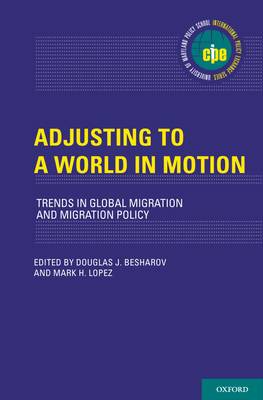
Bedankt voor het vertrouwen het afgelopen jaar! Om jou te bedanken bieden we GRATIS verzending (in België) aan op alles gedurende de hele maand januari.
- Afhalen na 1 uur in een winkel met voorraad
- Gratis thuislevering in België vanaf € 30
- Ruim aanbod met 7 miljoen producten
Bedankt voor het vertrouwen het afgelopen jaar! Om jou te bedanken bieden we GRATIS verzending (in België) aan op alles gedurende de hele maand januari.
- Afhalen na 1 uur in een winkel met voorraad
- Gratis thuislevering in België vanaf € 30
- Ruim aanbod met 7 miljoen producten
Zoeken
Adjusting to a World in Motion
Trends in Global Migration and Migration Policy
€ 151,95
+ 303 punten
Omschrijving
Today, 215 million people live outside their home countries and another 700 million say they would migrate to another country if they could. This volume examines the ways both sending and receiving nations are modifying their migration policies to control entry, to encourage assimilation, and to build links between diasporas and their home countries.
Specificaties
Betrokkenen
- Uitgeverij:
Inhoud
- Aantal bladzijden:
- 440
- Reeks:
Eigenschappen
- Productcode (EAN):
- 9780190211394
- Verschijningsdatum:
- 11/02/2016
- Uitvoering:
- Hardcover
- Afmetingen:
- 243 mm x 168 mm
- Gewicht:
- 702 g

Alleen bij Standaard Boekhandel
+ 303 punten op je klantenkaart van Standaard Boekhandel
Beoordelingen
We publiceren alleen reviews die voldoen aan de voorwaarden voor reviews. Bekijk onze voorwaarden voor reviews.








